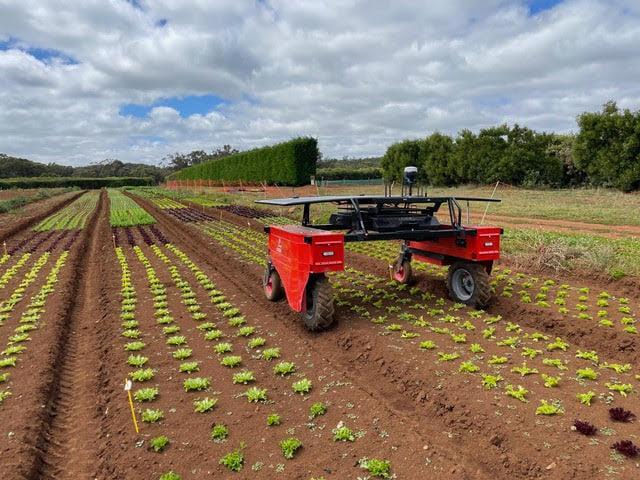A “drone on wheels” robot developed by Australian agtech firm Agerris is the newest addition to the Victorian-based SuniTAFE Smart Farm that will be used to not only support the farm’s operations, but also to train technical staff on-site.
The Digital Farmhand was developed to help farmers improve crop yield, pest and weed detection, as well as reduce the need for pesticides.
Each mobile roving robot runs on solar energy and features navigation sensors, laser sensors, infrared sensors, cameras. It also has an artificial intelligence system that can create weed heat maps, as well as detect each individual crop and determine its yield estimation, plant size, fruit and flowering count.
The contract with SuniTAFE is one of several that Agerris has secured over the last few years since it spun out as a commercial entity from the University of Sydney’s Australian Centre for Field Robotics in 2019. There are three other Digital Farmhand robots deployed in Victoria, and another in Queensland and New South Wales.
Speaking to ZDNet, Agerris CEO Salah Sukkarieh revealed the company plans to build another 10, citing that having such technology on-farm means improved efficiency and productivity for farmers.
“Weeds are one of those things that when you let the weeds grow the way they do, you deprive the plants of nutrients and it removes the yield that you want to get out of the plants,” he said.
“Being able to remove weeds early, continuously, consistently gives greater yield.
“When it comes to the crop intelligence, you get early detection of pest disease and that helps them to detect it before it spreads further in the field.”
At the same time, it also gives farmers access to information they never previously had access to, Sukkarieh added.
“[The data] gets down to the individual plant and down to the individual weed. It helps a farm’s agronomist, so they know what’s going on in the farm and helps them a lot more with understanding their plant,” he said.
Designed to run every day, the Digital Farmhand is configured to maps out the farm it works within in order to know how much it needs to travel within a paddock and its rows.
“It follows the rows of crops, it knows when it needs turn at the end, and when to come back down. It’s got sensors looking down, and collecting the data and information from the plants continuously. Doing that week-on-week, you can look at the changes,” Sukkarieh said.
The Digital Farmhand is not the only robot Agerris has developed. The company is also gearing up to launch a commercial prototype of the Swagbot, which is aimed at helping the cattle industry examine pasture quality and animal health management.
“Farming is a business … what’s generally happening is there’s a labour shortage, costs are increasing, and the consumer demand for higher quality is forcing everyone to think about what they should do on-farm. A lot of [farmers] are starting to turn their attention to robots and sensing. Some are moving quicker than others,” Sukkarieh said.
Related Coverage
Inquiry says technology could boost the value of Australia’s agriculture sector by AU$20b
The House of Representatives Standing Committee on Agriculture and Water Resources also put forward 13 recommendations.
Australia’s report on agtech confirms technology can lead to a fertile future
Sensors, robotics, AI, and blockchain are outlined as some of the future technologies that can improve the sector’s advancement.
CSIRO using artificial intelligence to map 1.7m Australian grain paddocks
It developed ePaddocks for the agriculture sector to better understand the boundaries of grain paddocks across the country.
The Yield scores AU$11 million in funding from Yamaha Motor Ventures
The company’s major shareholder Bosch Group has also converted its existing loan into equity.
